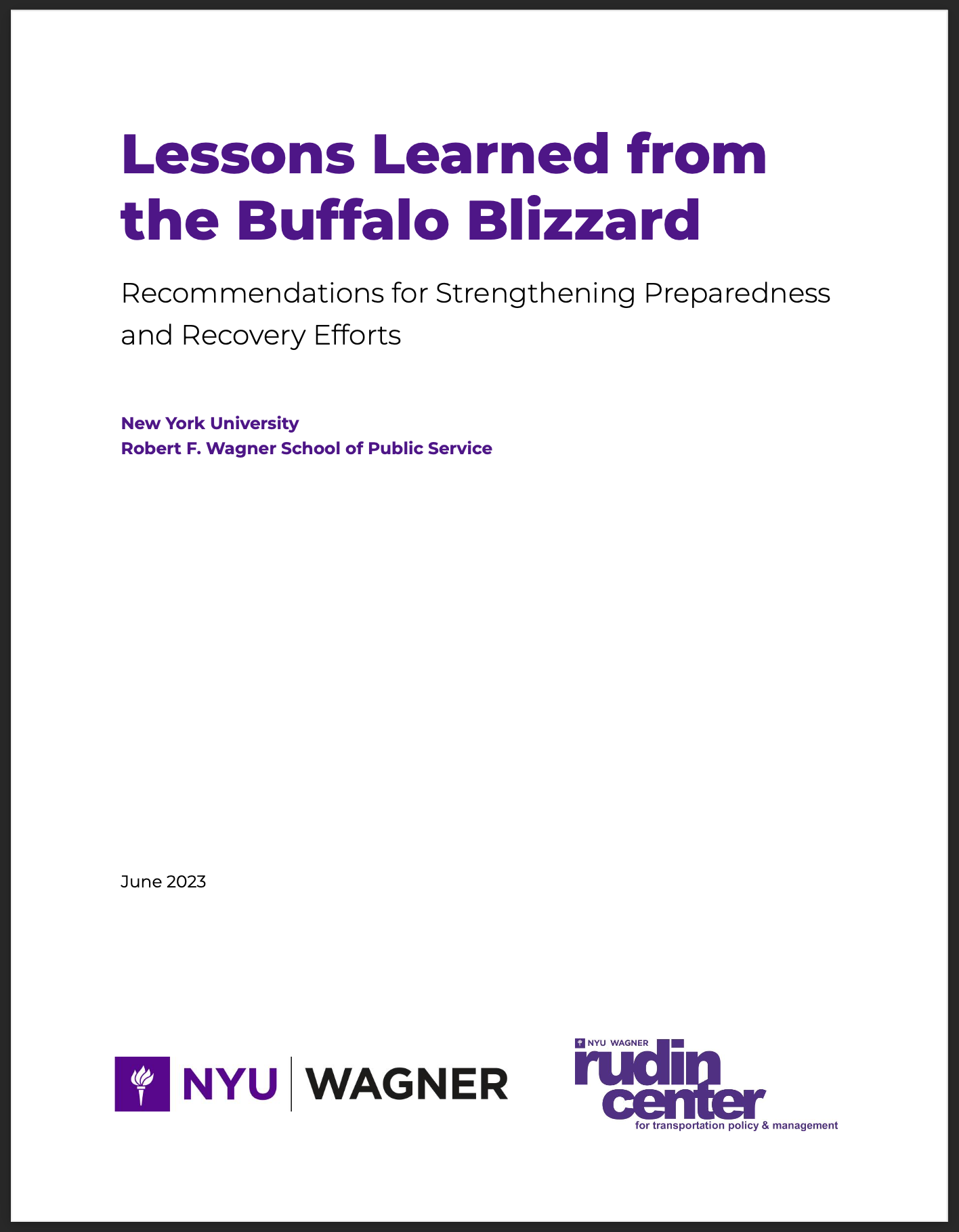Lessons Learned from the Buffalo Blizzard: Recommendations for Strengthening Preparedness and Recovery Efforts
In December 2022, the City of Buffalo in Erie County, New York experienced a “generational storm” that claimed the lives of 31 residents and brought activity to a standstill for nearly a week. While the city is no stranger to snowstorms, several factors made this particular blizzard uniquely challenging. Hurricane-force winds of up to 80 miles per hour brought whiteout conditions and 15-foot high snowdrifts, wind chill temperatures dipped to 30 degrees below zero Fahrenheit, and the blizzard lasted longer than any prior storm below 5,000 feet of elevation in continental U.S. history.
To compound the dire situation, the blizzard hit Buffalo during the Christmas season, when many residents had travel plans and some essential workers were already away for the holidays. Employees who remained local were asked to sacrifice their holiday time to serve in extraordinary conditions that resulted in 46 deaths countywide.
Without question, the storm had serious adverse effects on the city’s infrastructure, businesses, and residents. Taking a proactive approach, Buffalo Mayor Byron Brown sought expertise on how to better prepare for future blizzards of this magnitude. He commissioned the NYU Wagner School to conduct an analysis of the storm’s impacts and to identify actionable solutions aimed at improving preparation and recovery, and reducing loss of life and property in the future.
A research team of nine individuals and additional advisors (a full list of study participants appears on page 2) focused on and investigated four primary areas of impact:
- Roads: How disastrous road conditions and insufficient snow removal resources impeded the storm response and recovery
- Utilities: How power losses affected residents and city operations
- Communications: How warnings and emergency messages were communicated to the public
- Equity: How the storm exacerbated existing inequities in the city of Buffalo
Despite these significant challenges, aspects of Buffalo’s response were highly successful and demonstrated resourcefulness and bravery under immense pressure.
To address the challenges identified through our research, our team developed a set of recommendations for consideration by Mayor Brown and the City of Buffalo. These recommendations encompass changes that can be enacted as soon as next storm season (Winter 2023-24), as well as larger systemic changes aimed at upgrading preparation and recovery in the long term while minimizing the risk of loss of life, injury, and damage. We also include steps to harness the city’s unique and highly successful 311 program.
- Bolstering physical assets for greater efficiency, protection, and nimble operations
- Partnering with regional, state and federal agencies, as well as the private and non-profit sectors, to realize the City’s immediate and long term needs.
- Creating and maintaining clear and consistent public communications
- Addressing systemic challenges that hinder resilience, including impacts on under-resourced neighborhoods and residents and mobility-linked hindrances
The research team was asked to review the response to an unprecedented storm that occurred over a holiday. As such, the report should not be read as a suggestion of negligent conduct by any of the respondents or government officials, many of whom were heroic in a time of crisis. To the extent that words such as “inadequate” or “insufficient” appear in the report, the intent is the literal meaning; in other words, a given action or resource was not able to counter a particular circumstance.
We make recommendations for improving preparation, but we recognize that since resources are limited, appropriate planning must balance the costs and benefits of all preparedness actions in light of the probability that they will be needed. We do not undertake any such balancing of costs and benefits in this report.
A true strength of the City of Buffalo is that it lives up to its nickname, “The City of Good Neighbors.” Its residents are a testament to the city’s resilience and caring nature. Our research team encourages the city to lean into this strength and utilize its tight-knit communities to better prepare local residents for future weather crises, and to foster even more effective mutual assistance. This report provides a roadmap for helping the city make meaningful progress.
